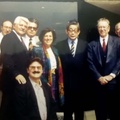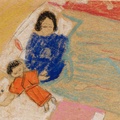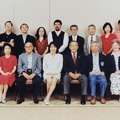José Taro Zorrilla Takeda is a young Japanese-Mexican artist and architect who was educated at prestigious universities in Japan and Mexico. Through his profession and social activism, he has succeeded in combining the training both countries provided to develop his career and dedicate himself to addressing the problems facing both countries.
Taro’s mother, Kazuko Takeda, arrived in Mexico in 1974 as a young woman. She had attended Sophie University (Jōchi Daigaku), where she majored in Spanish. Kazuko was part of a new wave of Japanese people who moved to Mexico, attracted by the country’s culture. During those years, Japanese investment in Mexico was increasing exponentially, stimulated by the rapid growth and expansion of Japan’s economy. Part of that wave was the opening of Suntory, one of the first Japanese restaurants in Mexico, where Kazuko began working due to her ability to speak both Spanish and Japanese.
While working at the restaurant, Kazuko met a young Mexican, José Luis Alberto Zorrilla, and the two were married. Kazuko gave birth to Taro in Mexico City in 1980; his brother Armando Tashiro was born a few years later. Unfortunately, their father died while the boys were still young, and Kazuko raised them on her own. The boys entered the Japanese section of the Liceo Mexicano Japonés (Japanese-Mexican School), where they studied until high school. As a result, their education was based on Japanese values and traditions.
After starting secondary school in Mexico, Taro became increasingly interested in art and architecture, which led him to apply for admission to the Tokyo University of the Arts (Tōkyō Geijutsu Daigaku). Although his application was rejected, he decided to stay in Japan and study at Waseda University, where he earned a degree in architecture.
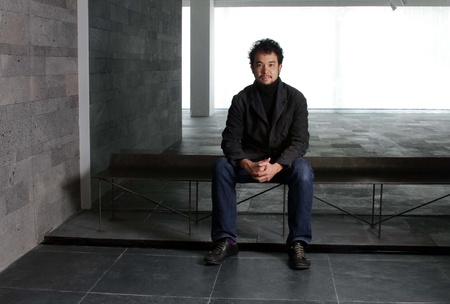
Studying in Japan for several years enabled Taro to appreciate the contrasts between the two countries and assess the serious social problems in the country of his birth, particularly the extreme polarization of Mexican society. This experience left a strong personal mark on the young architect, and in the years that followed it shaped the path he would take in life.
Once he finished studying in Tokyo, Taro wasn’t inclined to start working at an architectural firm in Japan. He found the professional life in that country suffocating in the sense that it required the pursuit of material gains exclusively, and didn’t speak to his social and artistic concerns. So he returned to Mexico and began a master’s program at the Autonomous National University of Mexico. The program at the School of Architecture provided an opportunity to study within an approach that combines expressive, artistic, and social sensibilities with the Japanese precision and techniques he had learned in Waseda.
Taro’s life also began to unfold in two realms. On the one hand, in terms of his professional career, he focused on developing both artistic and architectural projects. But also, as a Nikkei, his identity began navigating between the Mexican and Japanese cultures, a journey undertaken not to arrive at some port or specific place, but one which is driven by varying winds and swells that give shape to a process of identity that is malleable and not necessarily static.
In 2007, Taro participated in the Lisbon Architecture Triennale, a defining moment in his professional life. For that event, he presented a maquette of the spaces through which Mexican immigrants to the United States express their desire to build houses in their hometowns. To create and conceptually present the analysis of that space, Taro conducted research in the village of Ixmiquilpan, in the state of Hidalgo, from which thousands of people had emigrated to the U.S. With the remittances that workers sent home to their families, the emigrants had designed and built houses that reflected their lifelong “dreams”. Contact with the emigrants from that town allowed Taro not only to complete his project, which was well-received in Portugal, but also to understand the problems and hopes of the marginalized inhabitants of that region, who feel they have no choice but to leave their country in order to survive.

Through his contact with Mexican emigrants to the United States, Taro became aware of his own scars resulting from being educated in two different cultural environments. This helped him create a professional project beginning in 2008 called “A Country in Memories,” which consisted of photographs and videos of Japanese immigrants in Mexico. This work sought to promote the values of the Nikkei in Mexico and resulted in an exhibit of photographs and videos at Mexico City International Airport.
Meanwhile, Mexico’s integration into the process of globalization in the late 20th century stimulated a series of neoliberal economic and social reforms. This integration into the global economy accelerated the concentration of wealth in the hands of a few, fueling growth in poverty, as borne out by statistics from the past 30 years. In addition, these policies weakened the country’s social fabric, breaking down family and community ties. Without a doubt, both domestic and societal violence are related to this complex process of the breakdown of Mexico’s social structure.
In the face of this situation, Taro and a group of young Japanese and Mexicans were determined not to remain silent, and in 2011 they founded the nonprofit Fundación Paisaje Social (Social Landscape Foundation) to strengthen interpersonal connections through a series of workshops using art as a medium for expression and communication.
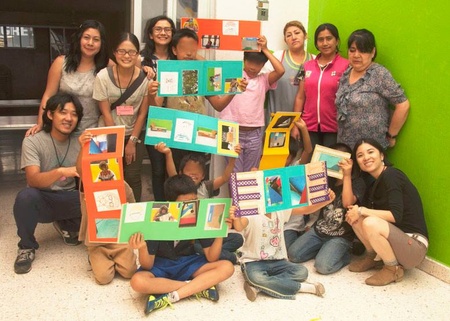
The mechanisms that Fundación Paisaje Social initially launched were designed to link privately run homes for the elderly, providing these workshops where participants could meet and interact in a collective and friendly way. The desire to work with homes for the elderly during the first years of the organization was also due to a situation that these young Japanese and Nikkei perceived to be occurring in Japan, where hundreds of thousands of people live in relative abandonment and exclusion. Because of the aging of the Japanese population, there are about 30 million people above the age of 65, and of that total, around 8 million are over 80. Within the next few decades, the majority of Japan’s population will be elderly.
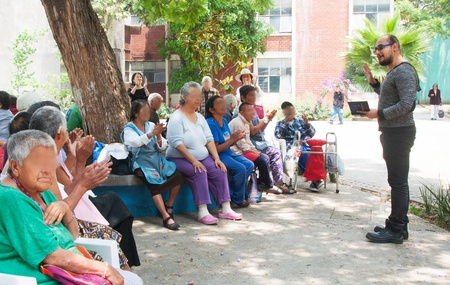
Over the years, Fundación Paisaje Social raised its visibility and defined more markedly its activities and the importance of these workshops, which are now offered in public institutions in Mexico City. Exclusion affects not only the elderly, but also street children and women who become homeless after fleeing domestic violence. In these public centers, which serve as shelters for women and children, there are high levels of violence because many of the inhabitants come from environments where domestic and social violence are everyday occurrences.
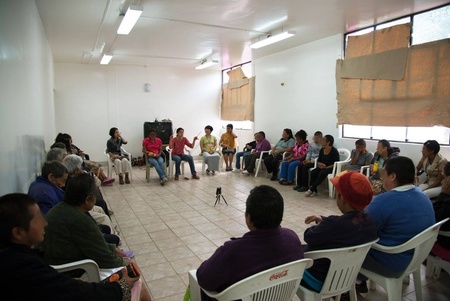
Workshops featuring readings, theater, visual arts, and museum visits, among other activities, are designed for more than just having a good time. They are actually centered around the same process of moving beyond handouts to promoting interpersonal and collective relationships. The participants themselves create spaces for peace and coexistence.
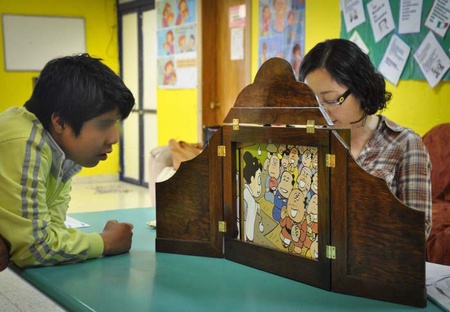
Paisaje Social, through public awareness of its activities, sheds light on the “hidden spaces” where thousands of city dwellers live and the conditions that exist in these institutions housing the elderly, women, and children. Violence and marginalization have roots and explanations that we must address and solve collectively.
* * * * *
Transpacific Borderlands: The Art of Japanese Diaspora in Lima, Los Angeles, Mexico City, and São Paulo
September 17, 2017 – February 25, 2018
Japanese American National Museum, Los Angeles, California
This exhibition examines the experiences of artists of Japanese ancestry born, raised, or living in either Latin America or predominantly Latin American neighborhoods of Southern California. Taro Zorrilla is one of the artists featured in the exhibition.
© 2017 Sergio Hernández Galindo



